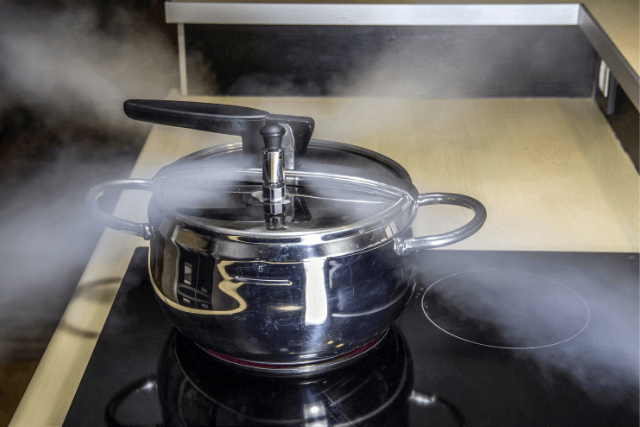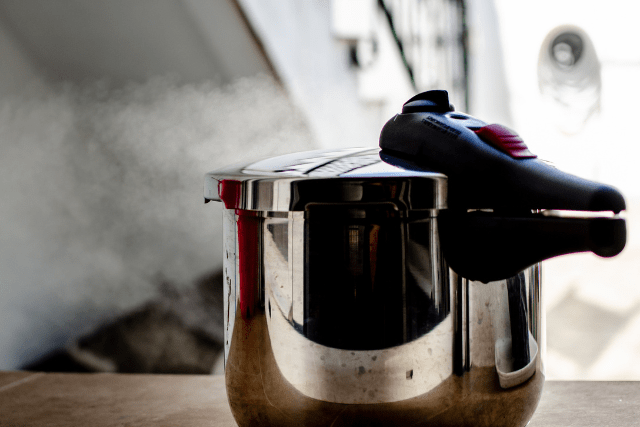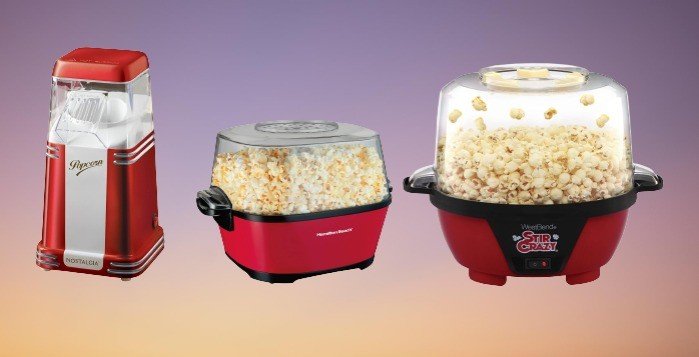Using a pressure cooker for the first time can seem daunting. But learning how to use a pressure cooker properly is quite simple when you follow some basic guidelines. This comprehensive guide will teach you everything you need to know to start cooking with your pressure cooker like a pro!
A pressure cooker is an incredibly useful kitchen appliance that can drastically reduce cooking times by using steam pressure. Foods that normally take hours to cook can be ready in minutes using a pressure cooker. Meats become fall-off-the-bone tender, beans cook perfectly, and flavours meld together beautifully.
But to fully take advantage of your pressure cooker while staying safe, it’s important to understand exactly how to use it. We’ll cover the key steps for success and answers to common questions new pressure cooker users have. Let’s get cooking!
Key Takeaways
- Select a pressure cooker size and type that matches your cooking needs and habits.
- Master the correct water ratios and measurements for optimal cooking results.
- Understand the different release methods to ensure food is cooked perfectly and safely.
- Regularly inspect and maintain your pressure cooker to ensure its longevity and safe operation.
How Does a Pressure Cooker Work?
Modern pressure cookers have locks, gaskets and other safety features that allow the internal temperature to rise well above the boiling point of water. This high-heat environment forces the liquid to convert to steam and builds up significant pressure inside the closed cooker.
The increased pressure causes the boiling point of the water to rise dramatically, which allows the temperatures inside the pot to reach up to 250°F. This high heat cooks food incredibly fast by essentially “pressure braising” the ingredients in hot steam.
Foods cook up to 70% faster in a pressure cooker than standard cooking. The extra heat penetrates dense foods to cook them evenly and intensely. Almost any dish that normally requires simmering or braising can be made quickly and conveniently in the pressure cooker.
Choosing the Right Pressure Cooker
Selecting the right pressure cooker for your kitchen needs is a crucial step in embarking on your pressure cooking journey. With the myriad options available, it’s essential to consider what fits best with your cooking habits and lifestyle.
Let’s break down the factors that’ll guide you toward making an informed decision:
- Size Matters: Consider the amount of food you typically cook. A 6-quart model is perfect for a family of four, but if you’re into meal-prepping or have a larger family, an 8-quart might be your go-to.
- Type of Pressure Cooker:
- Stovetop models are known for their durability and faster cooking times. They can also double as a regular cooking pot.
- Electric models, on the other hand, offer convenience and preset programs, making them ideal for those who prefer a set-and-forget approach.
- Material: Stainless steel pressure cookers are sturdy and resistant to corrosion, but they’re heavier and usually more expensive. Aluminium models are lighter and heat up quicker but aren’t as durable.
Choosing the right pressure cooker isn’t just about buying a kitchen appliance; it’s about selecting a partner who’ll accompany you on your culinary adventures. Consider these factors carefully, and you’re sure to find a match that feels like it belongs right in your kitchen.

Mastering Water and Measurements
Understanding the fundamentals of water and measurements is key to unleashing the full potential of your pressure cooker. You’re now part of a community that thrives on making cooking more efficient and enjoyable.
The right amount of water ensures your meals come out perfectly every time, avoiding the dreaded under or overcooked outcomes. It’s not just about filling the pot; it’s about precision and understanding the role water plays in pressure cooking.
Here’s a simple guide to get you started:
| Ingredient | Water Required | Cooking Time |
|---|---|---|
| Rice | 1 cup rice to 1.5 cups water | 5-10 mins |
| Beans | 1 cup beans to 4 cups water | 25-30 mins |
| Vegetables | Add just to cover | 2-5 mins |
Learning Release Methods
Now that you’ve mastered water and measurements, let’s explore the essential step of learning release methods for your pressure cooker. Understanding how to release the pressure safely and efficiently is crucial for your cooking success and safety. Here are three primary methods:
- Natural Release: This method involves simply waiting for the pressure to naturally dissipate over time. It’s perfect for dishes that benefit from continued cooking, like roasts or stews. Imagine the flavours melding perfectly as the pressure slowly eases.
- Quick Release: This method requires you to open the vent on the pressure cooker to let the steam escape quickly. It’s ideal for vegetables or seafood, where overcooking could turn your meal mushy. Picture the steam rushing out, signalling your dish is ready to enjoy.
- Cold Water Release: For stovetop models, running cold water over the lid of the cooker can rapidly drop the pressure inside. It’s a quick method to halt the cooking process instantly, preserving the texture of delicate foods.
Learning these release methods will not only ensure your dishes turn out perfectly but also make you feel more at home with your pressure cooker.

Troubleshooting Common Pressure Cooker Problems
If you notice any of the following issues, consult your instruction manual for proper troubleshooting:
- Pot not coming to pressure: Check that the lid is securely locked and the silicone gasket is clean and undamaged. Insufficient liquid may also prevent pressurization.
- Pressure releasing during cooking: The lid or gasket likely needs to be replaced. Stop cooking immediately and allow pressure to fully release before opening the lid.
- Burn notice or food scorching: Not enough liquid in the pot is usually the culprit. Make sure to include at least 1 cup of broth or water.
- Overly soft or mushy food: Cook time was likely too long. Adjust duration down in future uses
- Undercooked or hard food: Either more cooking time is needed or there is too much liquid. Adjust liquid and time until food reaches the desired doneness.
Pressure Cooker Safety Tips
Modern pressure cookers have multiple built-in safety mechanisms that make them very safe to use as long as you follow proper precautions. Here are some key tips:
- Read your instruction manual thoroughly before first use. Make sure you understand all safety precautions and operating directions.
- Only fill the pot up to the maximum fill line. Overfilling can cause a dangerous pressure buildup.
- Lock the lid securely before heating. Alignment marks will guide proper locking.
- Ensure the pressure release valve is clear and not blocked.
- Do not try to force open the lid while the cooker is pressurized. Wait for the pressure to fully release.
- Release pressure properly at the end of cooking by using natural release, quick release or cold water methods per recipe directions.
- Replace gaskets, valves and other parts regularly per manufacturer guidelines. Make sure all vent pipes are clear.
- Don’t leave the pressure cooker unattended during use. Stay in the kitchen in case quick cooling is needed.
Understanding how to care for your pressure cooker isn’t just about prolonging its life; it’s about creating a safe environment for you and your loved ones. Here’s a quick guide to keep you on track:
| Safety Tip or Maintenance Task | Why It’s Important | How Often |
|---|---|---|
| Check the gasket regularly | Ensures a proper seal, preventing leaks | Before each use |
| Keep the valve clean | Prevents clogging and allows for proper pressure release | After each use |
| Do not overfill | Prevents food from blocking the steam release valves | Each use |
| Inspect for damage | Identifies potential hazards before they become a problem | Monthly |
Frequently Asked Questions
What is pressure cooking and how does it work?
Pressure cooking uses steam pressure to raise the boiling point of water above 212°F. This allows food to cook faster. The sealed pot builds up pressure, forcing the liquid to convert to steam and cooking food rapidly with intense heat up to 250°F.
Is it safe to use a pressure cooker?
Modern pressure cookers have numerous safety features like locks, valves, and venting systems. As long as you follow the manufacturer’s instructions, pressure cookers are very safe. The key is properly sealing the lid, monitoring pressure, and releasing pressure safely after cooking.
What are the benefits of pressure cooking?
Pressure cooking can cook food up to 70% faster by using intense heat and pressure. It tenderizes meats, cooks beans and grains quickly, and brings out flavours as ingredients meld together. Pressure cooking also retains more nutrients compared to other cooking methods.
What types of foods can be cooked in a pressure cooker?
Almost any food that normally requires braising or simmering works well. Meats, beans, grains, soups/stews, eggs, vegetables, and even cheesecakes or rice puddings can be made in a pressure cooker.
How much liquid do I need to use?
Pressure cookers require at least 1 cup of liquid to create sufficient steam. The liquid might be water, broth, sauce, or juice. Follow recipe guidelines on the amount, and add extra liquid for pots over 6 quarts.
Do I have to alter the cooking time for recipes in a pressure cooker?
Yes, traditional recipes need adjusted cooking times for pressure cooking. Typical pressure cooker times are about 1/3 of conventional cooking. So a recipe calling for a 3-hour braise may take only 60 minutes in the pressure cooker.
Is it okay to open the lid while it is still pressurized?
Never open the lid before releasing all the pressure. The steam buildup will be dangerously released. Always allow pressure to return to normal before opening the valve.
What is the difference between natural and quick-release methods?
Natural release slowly lets pressure come down over 10-15 minutes. Quick release manually vents the steam immediately by opening the valve. Use quick release only for vegetables and grains, not meats, to avoid overcooking.
How do I know which release method to use?
Recipe directions will specify the release method. If not indicated, allow at least 10 minutes natural release for soups/stews and 15 minutes for meats. Use quick release only for quick-cooking foods like vegetables.
Why does the pressure cooker hiss after cooking stops?
Continued hissing means there is still pressure built up inside that needs to be released. Do not try to force the lid open. Leave the pressure cooker alone until the hissing fully stops.
How do I know when the pressure is fully released?
The pressure indicator will drop down and the float valve will sink. There should be no hissing sound. The lid will turn freely without resistance when you try to twist it when pressure is released.
My pressure cooker won’t come under pressure. How can I fix this?
Check that the silicone gasket is clean and secured properly in the lid. Add more liquid if needed. Make sure the lid locks securely onto the pot. If still not pressurizing, contact manufacturer support.
Why is my food undercooked or hard?
The cooking time may need adjusted to be a little longer. Also, verify you are releasing pressure properly after the time is complete. Check doneness with a thermometer, especially for large cuts of meat.
How Do I Adapt Traditional Recipes for Use in a Pressure Cooker?
To adapt traditional recipes for a pressure cooker, you’ll reduce the liquid by about one-third and cut cooking times by at least half. Always check for specific ingredient guidelines to avoid over or undercooking.
Can I Use My Pressure Cooker for Canning, and if So, Under What Conditions?
Yes, you can use your pressure cooker for canning, but it’s crucial to ensure it’s a pressure canner model. Always follow the manufacturer’s guidelines and use proper canning practices to ensure food safety.
What Are the Differences in Cooking Times of Electric Pressure Cooker Vs a Stovetop Model?
You’re probably wondering about the cooking time differences between electric and stovetop pressure cookers. Generally, electric models take longer to reach pressure, so you’ll need to adjust recipes slightly for that extra time.
How Do I Handle and Store Leftovers When Cooking With a Pressure Cooker to Ensure Food Safety?
To ensure food safety with pressure cooker leftovers, you’ll want to cool them quickly and refrigerate within two hours. Use airtight containers and consume within 3-4 days to keep everything fresh and safe.
Can I Use a Pressure Cooker to Prepare Special Diets, Such as Vegan or Keto?
Yes, you can use a pressure cooker for special diets like vegan or keto. You’ll just need to adjust cooking times for specific ingredients. It’s a versatile tool that fits your dietary needs perfectly.
Conclusion
Now that you’ve got the basics down, chosen your ideal pressure cooker, mastered measurements, and learned about release methods, you’re all set. Always remember, safety comes first, so follow those maintenance tips closely.
With a little practice, you’ll be whipping up meals in no time, enjoying the speed, flavours, and nutrients that pressure cooking brings to your table. Keep experimenting, stay safe, and relish the journey of becoming a pressure-cooking pro. Happy cooking!







